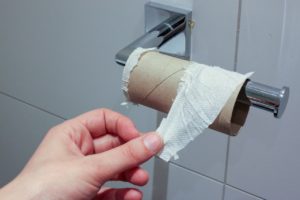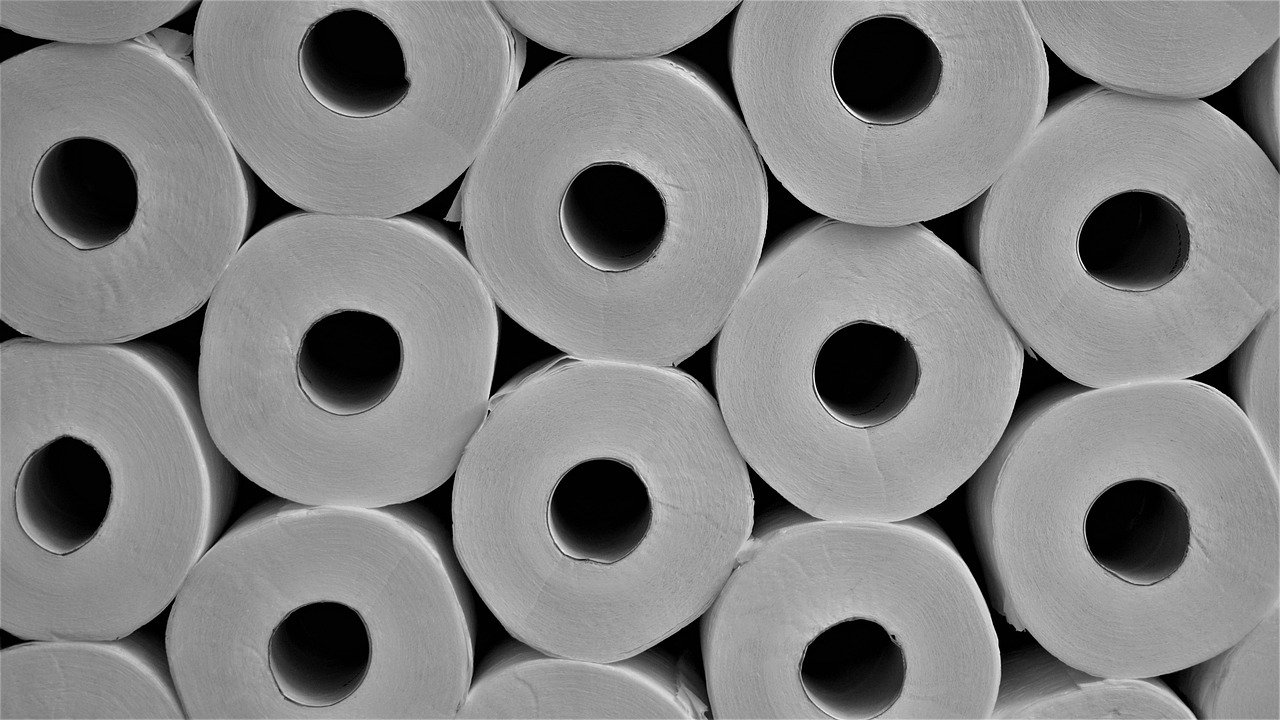Written by Duncan Oliver, HSOY
The history of cleaning up is indeed one strange tale. The Chinese are credited with inventing paper and first using it as toilet paper in the 6th century. However, it didn’t become popular for many centuries. So what was used before it became popular?

For many years, people in the Middle East and the Indian subcontinent have used water and washing with the left hand. This is why offering a left hand as a handshake is considered an insult. Have you ever heard of a left-handed compliment? Now you know.
In ancient Greece, along with water, pottery shards were used as scrapers. Sometimes these pottery fragments were inscribed with the name of an enemy before being used.
In Rome, people cleaned themselves after using a public toilet with a sponge tied to a stick. These were kept in a bucket of salt water. After use, it was rinsed and wrung out before putting it back so it was available for the next person.
Others have used leaves, moss, sticks, shells, sand, smooth stones, and reusable rags, often along with water.
What about those Pilgrims coming across the Atlantic on the Mayflower? No one on board wrote how they handled this regular function, but sailors in the 16 th and 17 th century often trailed a rope in the water and this was used to wipe. Tossed back in the water, it cleaned itself. (No, this wasn’t the rope John Howland grabbed to save himself when washed overboard in a storm. He grabbed a loose halyard from a sail.) Salt water was also used to wash. For those using chamber pots, water was probably the preferred method. Many of the people on the Mayflower had started from Leiden in the Netherlands in June of 1620 and actually stayed on board through the winter into 1621. Changing clothes and washing wasn’t a common occurrence and hygiene was an issue, even if they weren’t always aware of it.
The invention of indoor plumbing and a flushing toilet changed routines even more. The flushing toilet was invented by Sir John Harrington in 1596. Water was released by a valve and he suggested flushing at least twice a day. Some give credence that the name “John” being given to toilets relates back to Sir John.
In rural areas, handfuls of straw were frequently used, and one of the more popular items to use for clean-up was dried corncobs. Even after toilet paper became available, some people still preferred corncobs when using the outhouse.
Before toilet paper, outhouses had paper from catalogs (The Farmers Almanac has been in publication since 1818) and later the Sears, Roebuck catalogs. Lime was dumped into the pit to help speed the decay.
In the U.S. in 1857, Joseph Gayetty made his “medicated paper” from hemp, along with aloe. Scott paper started in 18679, and in 1890, toilet paper was sold on a roll. But it wasn’t until the 1920s that names were printed identifying the manufacturer. Charmin was one of the earlier. And, since that time people have purchased and used toilet paper.
As you probably remember, this is NOT the first toilet paper shortage in the US. In 1973, with gas prices spiking due to shortages, rumors started that there were toilet paper shortages in Japan.
A congressman from Wisconsin, Harold Froelich, was dismayed that less pulp was being cut in his heavily wooded district. He released a press statement “ The Government Printing Office is facing a serious shortage of paper” but it received little attention. Some weeks later he found a document that mentioned that the government’s National Buying Center hadn’t secured enough bids to provide toilet paper for its troops and bureaucrats. On December 11, another press release was sent from his office: “The U.S. may face a serious shortage of toilet paper within a few months…we hope we don’t have to ration toilet tissue…a toilet paper shortage is no laughing matter. It is a problem that will potentially touch every American.”
This claim spread throughout the public by the media. At this point, comedian Johnny Carson joked about it on his late-night TV show. To his 20 million viewers he noted, “You know, we’ve got all sorts of shortages these days, but have you heard the latest? I’m not kidding. I saw it in the papers. There’s a shortage of toilet paper!”
The result was a run on all stores carrying toilet paper. For four months, toilet paper was a rare item until the panic subsided in February of 1974. Slowly the public realized that there really wasn’t any shortage. Johnny Carson issued an apology; “I don’t want to be remembered as the man who created a false toilet paper scare. I just picked up the item from the paper and enlarged it somewhat…there is no shortage.”
Johnny didn’t stay out of the spotlight too long. In 1976 it was reported that he was involved in a lawsuit with a porta-potty company named “ Here’s Johnny.”
So, what is happening today?
Some four billion people worldwide don’t use toilet paper. While some can’t afford it and others don’t want to spend the money, water is much more commonly used than paper.
Parts of Europe use aimed jets of water, or separate toilet fixtures known as bidets. Toilet paper is simply used to dry off. In the far east, some use scrapers too. In parts of South America, toilet paper isn’t flushed – it’s thrown out with the trash. Just another hazard for dump pickers!
A little research on this topic shows interesting facts like: The average American uses over 100 single rolls each year (over 25,000 sheets a year), or 69 sheets of toilet paper a day. An average single roll lasts five days.
Americans bought over seven billion rolls of toilet paper this past year, compatible to our sewer and septic systems. Understand that toilet paper and facial tissues aren’t the same, although they feel similar. Toilet paper is made to decompose within seconds of getting wet, allowing it to easily dissolve in septic systems.
And now you know the history up to our current shortage. We haven’t answered the question, should the roll be installed with the paper being unrolled over the top or underneath?
And if you don’t have any and are sheltering in place, there’s a website that tells you how to recycle newspaper into TP. It’s ehow.com and I’ll bet some of you check. Good luck!

